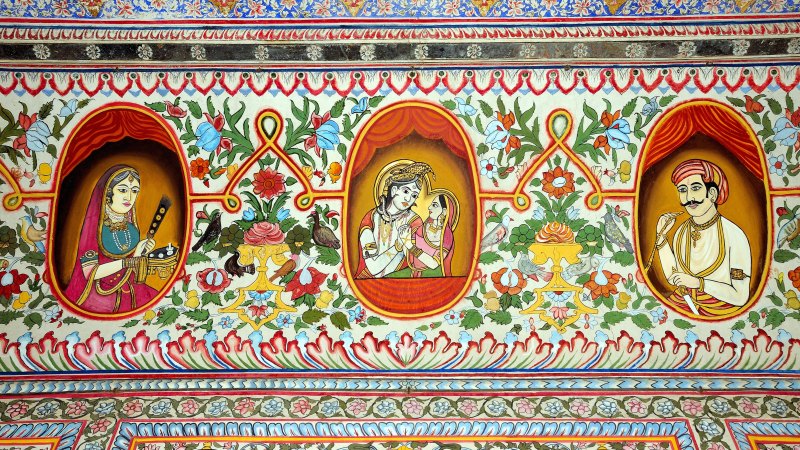This story is part of the May 26 edition of Sunday Life. See all 14 stories . It’s dark when I arrive at the Vivaana Culture Hotel in Churi Ajitgarh, 240 kilometres south-west of Delhi, headlights ricocheting off a wall painted with camels and elephants.
The electricity is out and I’m led to my room by torchlight. Candles are lit and my guide leaves me to it. The historic painted Shekhawati havelis depict traditional folk tales, hunting scenes, battles, ancestor portraits and stories.

Credit: Getty Images The next morning I wake in a painted garden. The walls are frescoed with twining pink roses, encircling stucco columns that rise to an arcaded gallery overhead. Krishna stands beside a woman under a banyan tree that shades a doorway; in the courtyard outside my room, turbaned figures are set into wall niches overlooked by small windows surrounded by elaborate architraves.
This part of Rajasthan is known as Shekhawati, named after Rao Shekha, who wrestled this part of the state away from the rulers of Amber, today’s Jaipur. It was populated by Shekhawat Rajputs, agile businessmen who set themselves up as merchants on the edge of the Thar Desert, one of the strands of the Silk Road. When the British East India Company came to rule the subcontinent the trade died, and from the early 1800s the Shekhawats shifted their mercantile skills to Calcutta and Bombay.
But while those cities made them rich, their hearts lay in their dusty homeland. Weddings, births, the first rice-e.
















